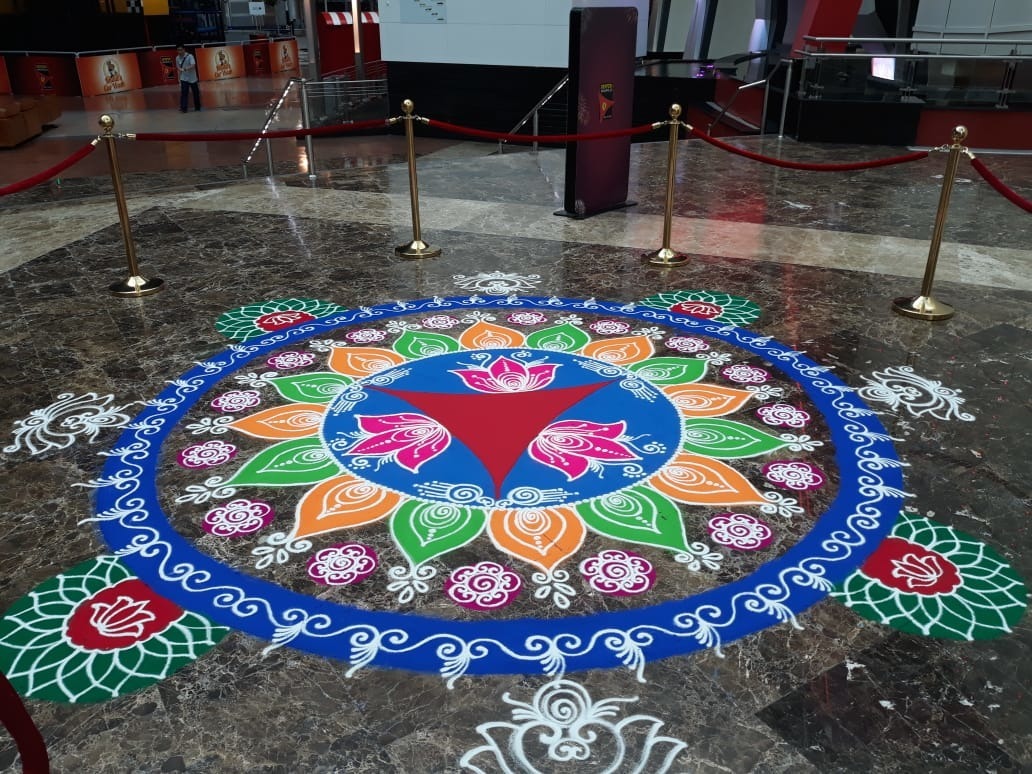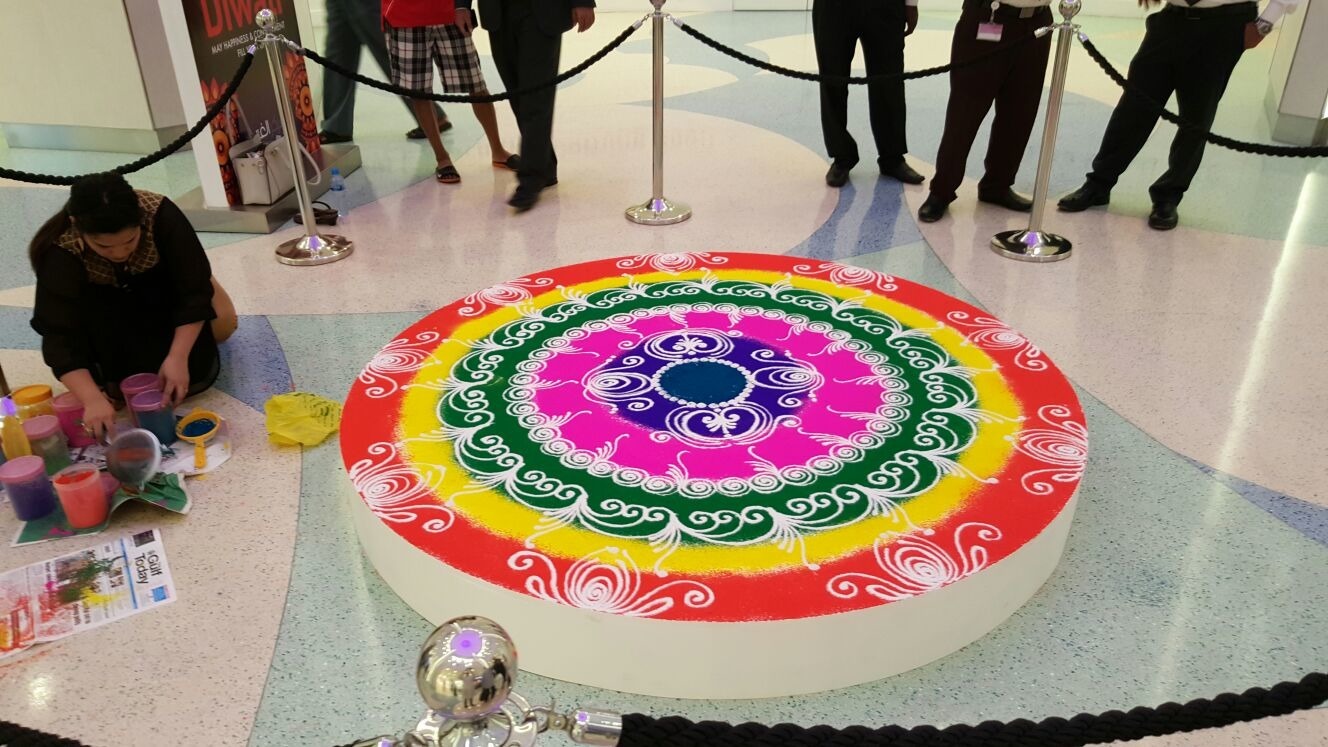Biography
Rangoli is an art form, originating in the Indian subcontinent, in which patterns are created on the floor or the ground using materials such as colored rice, dry flour, colored sand or flower petals. It is usually made during Diwali or Tihar, Onam, Pongal and other Hindu festivals in the Indian subcontinent. Designs are passed from one generation to the next, keeping both the art form and the tradition alive.
The purpose of rangoli is decoration, and it is thought to bring good luck. Design depictions may also vary as they reflect traditions, folklore, and practices that are unique to each area. It is traditionally done by girls or women. Generally, this practice is showcased during occasions such as festivals, auspicious observances, marriage celebrations and other similar milestones and gatherings.
Rangoli designs can be simple geometric shapes, deity impressions, or flower and petal shapes (appropriate for the given celebrations), but they can also be very elaborate designs crafted by numerous people. The base material is usually dry or wet powdered rice or dry flour, to which sindoor (vermilion), haldi (turmeric) and other natural colours can be added. Chemical colors are a modern variation. Other materials include colored sand, red brick powder and even flowers and petals, as in the case of flower rangolis.
Talent Card
Specialty Act
India
Rangoli, Sand Artist
Hotels & Restaurants, Wedding, Festival, Public Event, Corporate Event, Private Party, Exhibition





